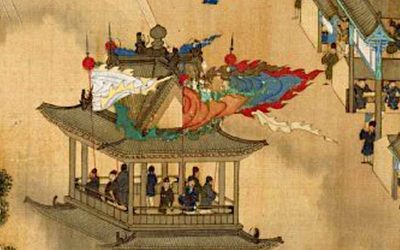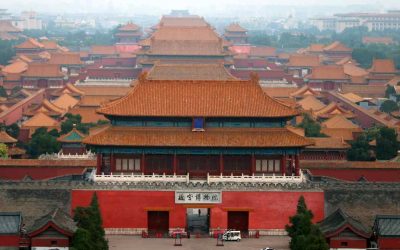The Dong are one of the minorities of China with a large population. According to the census of the year 2000 their population was 3,000,000 people.
They live mainly in Guizhou Province (approximately 1,800,000 people), along a fringe of flat lands that cross the province from north to south. There is also a big Dong population in the southern part of neighboring Hunan Province (about 900,000), and more than 200,000 persons in Guangxi Zhuang Autonomous Region, and a few thousand in Hubei Province (Enshi Prefecture).
The Dong, as do most of the peoples related to them, live near the rivers or in hills generally not of great height. They mainly cultivate rice. They raise domestic animals, especially hens and pigs. The exploitation of the forests, which holds a special spiritual relationship with the Dong, is an activity of economic importance.
They refer to themselves as «Kam.»
It is generally considered that there are two quite different types of Dong, the Dong of the North and the Dong of the South.
There are important linguistic and cultural differences between them. In general those of the north have received more influences from mainstream Chinese culture, while those of the south better conserve the Dong traditions. The typical monuments of the Dong, such as Drum Towers, Bridges of Rain and Wind, and the Temples of the Goddess Mother Sama, are all characteristic of the Dong of the South.
Their language belongs to the Sino-Tibetan family, Dong Dai branch, Zhuang Dong sub-branch. It has two main dialects, understandably called the northern and southern dialects, whose speakers cannot understand each other easily. Each one of these dialects has in turn three clearly differentiated local sub-dialects.
After 1958 an alphabet was invented for their language, but it has not been widely used. Before 1958, they used Chinese characters adapted to their own language.
More posts on China ethnic groups
¿Contiene el Daodejing el más antiguo mito de la creación de China?
¿Contiene el Daodejing el más antiguo mito de la creación de China? En un artículo de introducción a la mitología china se afirma (por dos veces) que el mito de la creación de Huangdi (el Emperador Amarillo) se debe de considerar uno de los mitos de creación de China,...
El bosque de piedra. Una maravilla natural a un paso de Kunming
El bosque de piedra. Una maravilla natural a un paso de Kunming El Bosque de Piedra (石林) es la atracción estrella del entorno de Kunming. Situado a 86 kilómetros de la ciudad, es un extenso laberinto de afilados pináculos de piedra caliza, que llegan en algunos...
El toro que creó el mundo y otros bovinos sagrados entre la minoría Bulang
El toro que creó el mundo y otros bovinos sagrados entre la minoría Bulang Los Bulang (布朗族), un grupo étnico austroasiático que habita principalmente las tierras altas productoras de té de Yunnan, veneran al buey como un ser sagrado, vinculado a la creación, la...
Matriarcado Lahu: Una sociedad diádica igualitaria en China
Matriarcado Lahu: Una sociedad diádica igualitaria en China (Esto es un fragmento de mi libro: Madres, Reinas, Diosas, Chamanes: El Matriarcado en China. Miraguano. Madrid, 2011) La sociedad igualitaria de los Lahu llamó la atención del mundo académico con el estudio...
Así comienza el Wenzi, un clásico taoísta poco conocido
Así comienza el Wenzi, un clásico taoísta poco conocido. El Wenzi (文子) es un antiguo texto taoísta atribuido a un discípulo de Laozi. Aunque su autenticidad ha sido debatida a lo largo de la historia, su contenido refleja con claridad la cosmovisión del Dao y su...
Una humilde propuesta para repensar la periodización histórica: ir más allá de las dinastías en la historia de China
Una humilde propuesta para repensar la periodización histórica: ir más allá de las dinastías en la historia de China Las narrativas históricas nunca son neutrales. La forma en que dividimos el tiempo refleja no solo los hechos que elegimos recordar, sino también los...







